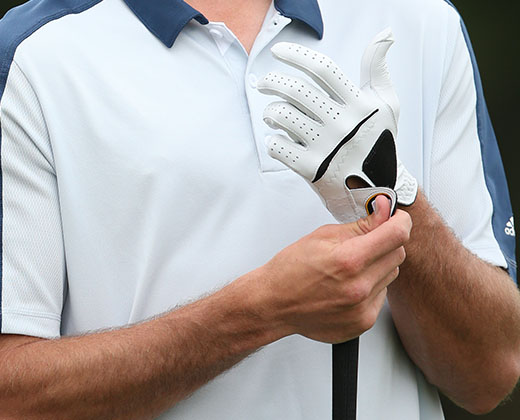Golf Basics: Chipping Tips
Precision is crucial to developing a solid short game. In the right situation, a well-executed chip shot can help you escape trouble and position yourself for a simple up and down.
The keys to developing a successful, repeatable chip shot involve keeping your swing and trajectory under control.
Taking a shorter, more controlled swing and keeping the trajectory low allows you to effectively manage runout and achieve greater greenside accuracy.
THE SITUATION
The ball is just off the green and you have 30 to 40 feet of relatively flat surface between you and the hole to work with. When faced with this scenario, a majority of amateurs may pull a higher-lofted wedge and try to pitch the ball all the way to the hole.
In this situation, that’s not your best bet. Opening your club face and taking a longer swing introduces unnecessary variables that make it difficult to cleanly contact the ball and predict how the ball will release upon impact.
Instead of attempting a pitch shot, try chipping.
HOW TO CHIP
- Grab your 52-degree wedge.
- Position the ball slightly back in your stance, about a hair back from center.
- Gently lean your hands forward, just inside your front thigh.
- Focus on a “landing spot” between yourself and the hole while taking a few practice swings (no farther than knee height).
- Address the ball and take the same controlled swing. The outcome should be a low shot that flies roughly a third of the way to the hole and runs out the remaining two thirds on the green.
OTHER CONSIDERATIONS
When preparing for a chip shot, it is important to assess the amount of space you have to work with and the slope of the green. These elements help you choose an optimal landing spot and allow for the proper amount of rollout. In addition, consider the following in order to hit a more precise chip shot:
- Maintain a square face through impact — opening or closing the face will send shots off line.
- Fixate on the “landing spot” and not the trajectory — your swing will naturally cause low flight.
- Envision your club brushing the turf after impact with the ball — taking a divot before hitting the ball can result in a shorter shot with too much lift.
Follow this advice and watch your scores drop as you save strokes around the green.








